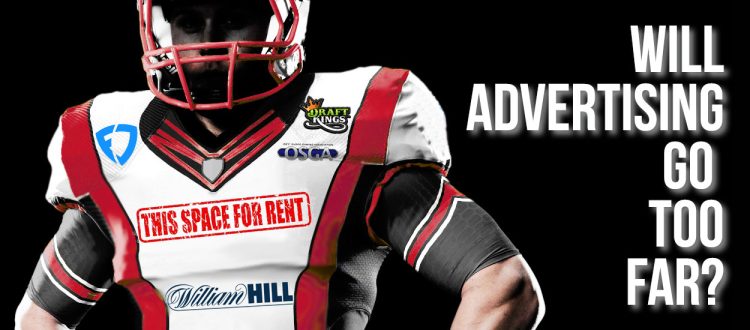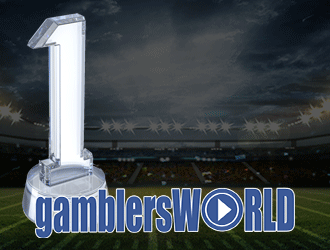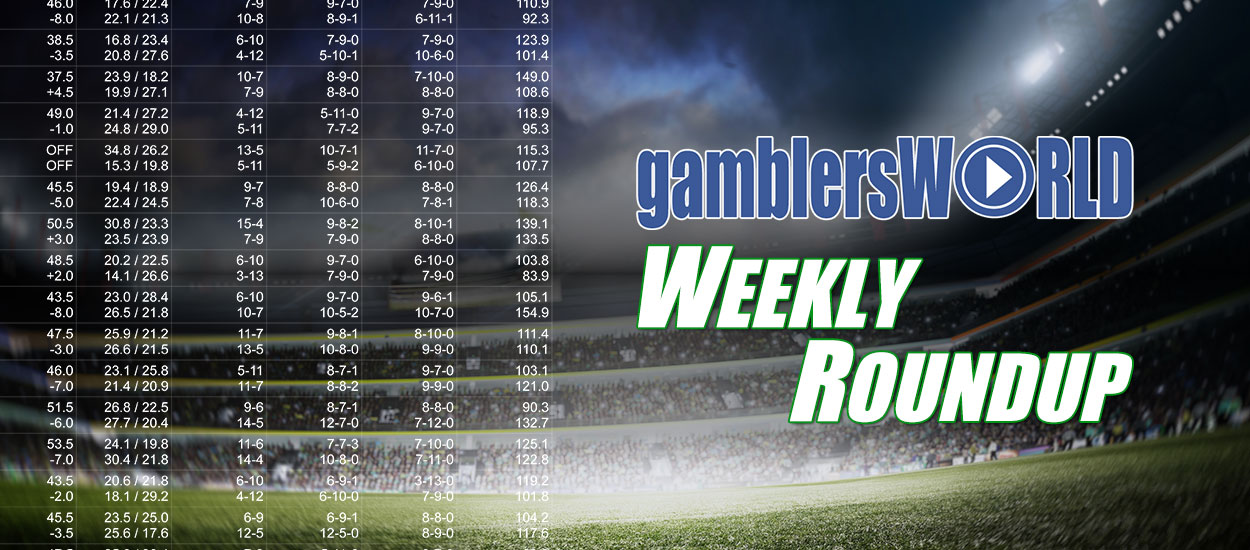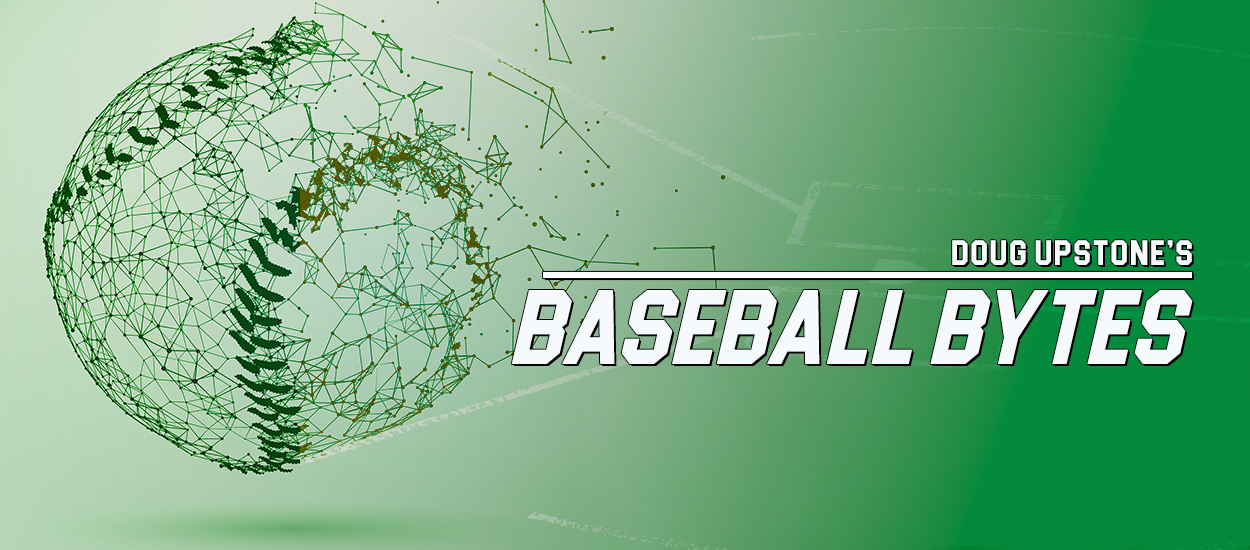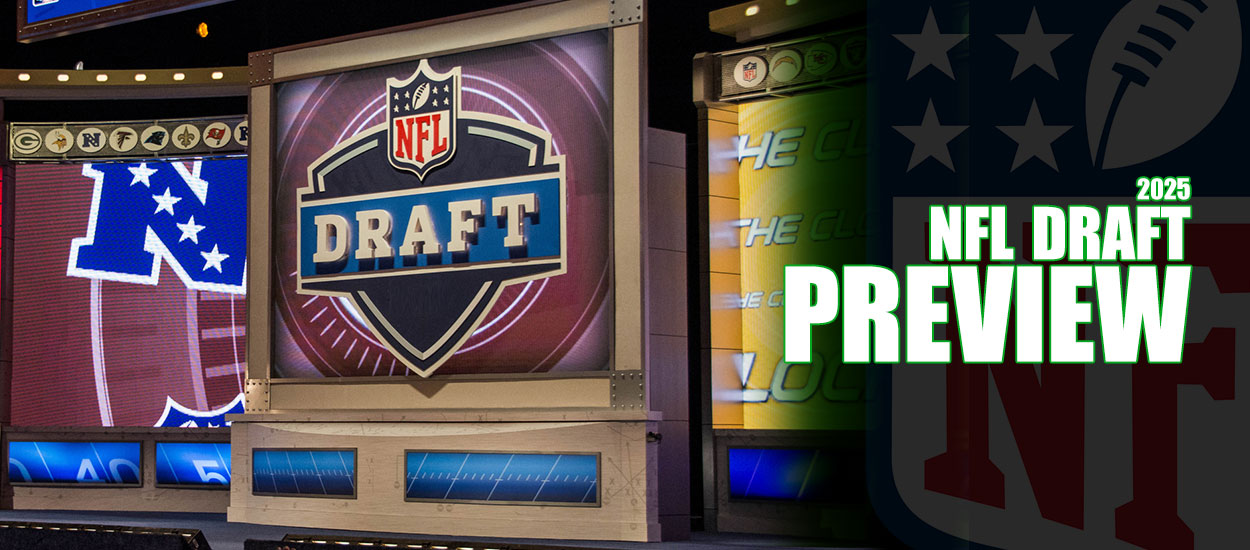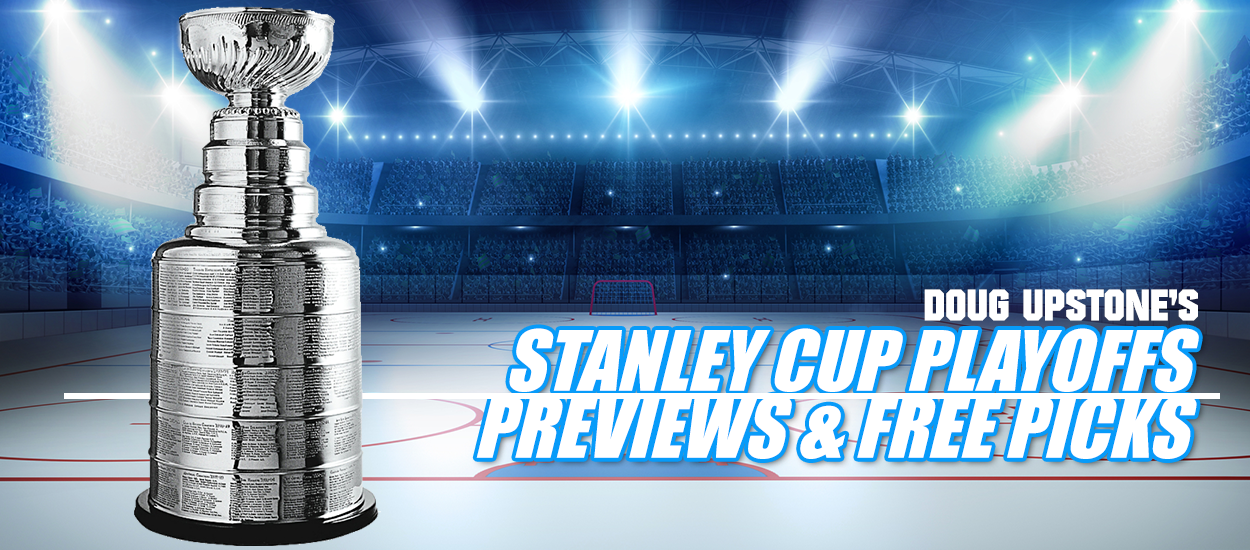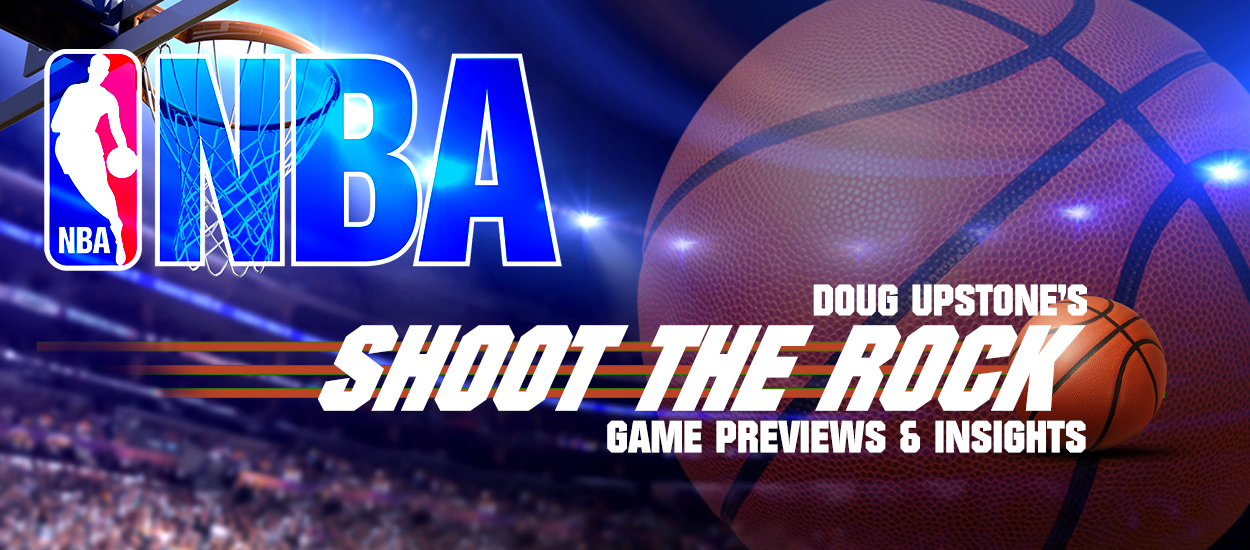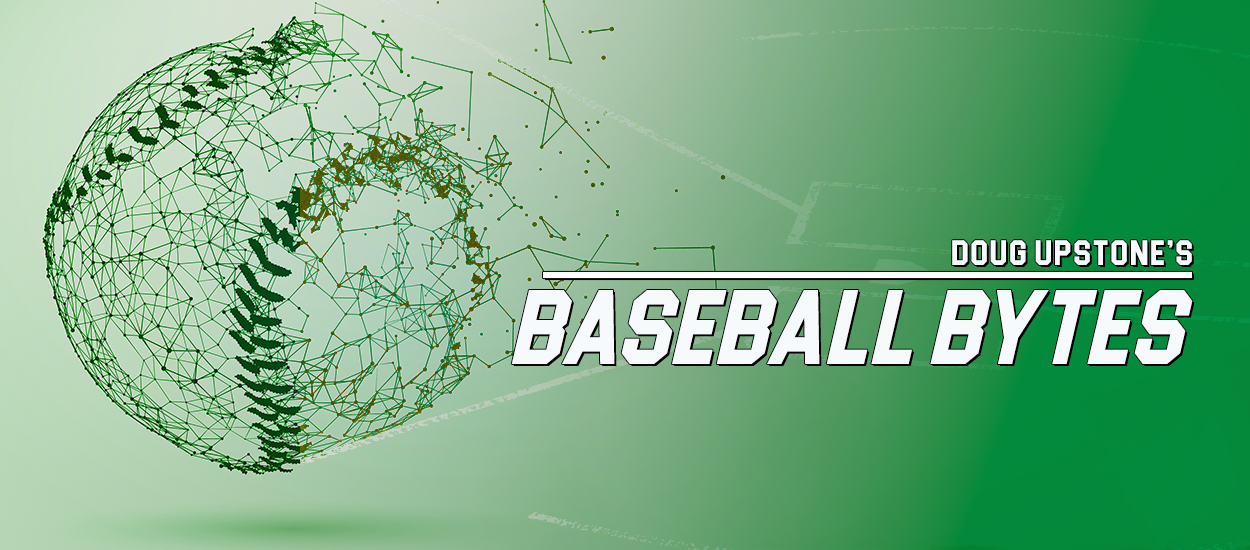In 2016 NHL Commissioner Gary Bettman told reporters that the league would have to be dragged kicking and screaming before it would agree to allow advertising logos to be put on Jerseys. He also indicated he was not interested in other advertising initiatives set out in Europe and in some minor league sports. That stance, however, changed after COVID-19 killed league revenue. Revenues tumbled during the pandemic as games in 2020 were played in bubbles without fans in Florida, Arizona and Edmonton. It continued in 2021 when an all-Canadian bubble saw very limited in-person attendance in Edmonton and Toronto as the border between Canada and the U.S. remained closed due to vaccine restrictions. 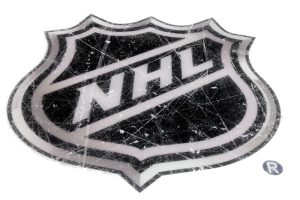 Along with the drop in revenue due to attendance and ancillary arena revenue, players also agreed to a deal with owners in a memorandum of understanding (MOU) to extend the collective bargaining agreement to 2026. The MOU can be read here. The complicated deal allowed the season to continue after a four-month shutdown and guaranteed four years of labor peace. However, the terms also eventually meant that the players now owe the owners a great deal of money, which they have since been trying to pay back. Consequently, the league sought measures to recoup some of those funds and it appears the NHL Players Association and the owners agreed that the best option was through advertising.
Along with the drop in revenue due to attendance and ancillary arena revenue, players also agreed to a deal with owners in a memorandum of understanding (MOU) to extend the collective bargaining agreement to 2026. The MOU can be read here. The complicated deal allowed the season to continue after a four-month shutdown and guaranteed four years of labor peace. However, the terms also eventually meant that the players now owe the owners a great deal of money, which they have since been trying to pay back. Consequently, the league sought measures to recoup some of those funds and it appears the NHL Players Association and the owners agreed that the best option was through advertising.
Three ways to grab advertising dollars
The league has implemented three methods of advertising and those efforts have angered many fans. The methods include advertising patches on jerseys, stickers on helmets and a digital advertising feature on hockey boards which allows the TV stations to change the advertisements. The board technology, called dasherboards (DED), allows advertisers to “erase and replace” the advertising found on arena rink boards with virtual ads during broadcasts. While the actual boards stay the same in the arena, what TV viewers see is whatever advertising the TV stations switch to at the push of a button.
The first time this was implemented in North America was in 2016 during the World Hockey Championships in Toronto when ESPN changed all the local advertisers to national American products, like Gatorade. They also changed the boards to read “Team North America” whenever they scored. It was at that time Bettman stated his “kicking and screaming” comment. The technology had existed for a while and has been used extensively in Spanish soccer during La Liga games since around 2010, but unlike the NHL it doesn’t interfere with the play of the game. In soccer the advertisements appear on makeshift billboards or parts of the field well away from the action, but in hockey this isn’t possible. 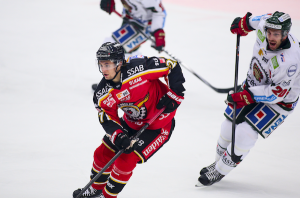 The fast-paced action of the game, along with the fact that the puck is often played along the boards means the two can’t be completely separated. Consequently, players have actually blended in with the advertising and the puck has gotten lost in the ads as well, because it is new it seems many stations are unsure of how to use the technology properly and that has led to major glitches. In a game between the Vancouver Canucks and Edmonton Oilers on Wednesday, the station showing the game had to cut away to fix a glitch related to the DED when the picture became a messy blur. This led to the station breaking from the live action to show commercials and several minutes of the game were missed. As one person in the comment section on the website wrote:
The fast-paced action of the game, along with the fact that the puck is often played along the boards means the two can’t be completely separated. Consequently, players have actually blended in with the advertising and the puck has gotten lost in the ads as well, because it is new it seems many stations are unsure of how to use the technology properly and that has led to major glitches. In a game between the Vancouver Canucks and Edmonton Oilers on Wednesday, the station showing the game had to cut away to fix a glitch related to the DED when the picture became a messy blur. This led to the station breaking from the live action to show commercials and several minutes of the game were missed. As one person in the comment section on the website wrote:
“one second the player seemed to be skating into a black hole on the board and the next thing you know, it’s 3 minutes later and the Oilers had someone in the penalty box. WTF?”
Similar complaints were issued on Twitter regarding the opening games of the season on ESPN and TNT. Some tweets included:
- “@NHL Dear god these digital board ads are horrible and distracting. I’m gonna be watching a lot less hockey this season it seems.”
- “@NHL @NHL_On_TNT STOP IT with those digital ads on the boards, my eyes can’t handle the picture scramble and it’s horribly distracting!!!”
- #NHL #ESPN These digital ads on the boards need to stop immediately. Horribly distracting with changes every 20-30 seconds. Kind of like motion sickness. Even a little thing like the goal line missing from the boards because of the ads is distracting.
It should be noted that the method used for DEDs in hockey is completely different from MLB games which projects local advertising onto a white board situated in the ballpark, something that has been available for almost 25 years.
Ads on Jerseys
Aside from the DED issues, some fans are also upset about advertising on jerseys and helmets. MLS was the first North American league to offer advertising on its jerseys, but this was really never an issue since soccer has a tradition of sponsorship advertising. But it was only in the last year that three of the 4 major sports announced it would follow suit. The NBA was the first league to announce it would allow advertising on jerseys and will begin this season. That revelation was followed by an announcement from the NHL and MLB that advertising on jerseys and helmets will begin in 2023. The NFL is the only league that has thus far rejected the notion of allowing sponsorship advertising on uniforms. Currently, both the NHL and NBA jerseys only have small patches for the advertising, but many fans claim it takes away from the authenticity and tradition of the jerseys. The iconic Toronto Maple Leafs‘ jerseys now have the word “Milk” on the breast as they have been sponsored by the Ontario Dairy Board and the Montreal Canadians have a patch for the Canadian bank RBC, which Montreal fans say interferes with the traditional red and blue jerseys. Most egregiously, the Minnesota Wild have advertising from TRIA, a regional orthopedics hospital, which blends into the jersey. There also prototypes that show larger advertising that takes up most of the jersey. That is particularly what concerns many fans and purists. A patch is one thing, but a full jersey ad similar to what soccer teams use is something altogether. There is also some belief that struggling teams may do like NASCAR teams where the shirts will be filled with multiple advertisers if the league ever allows it and in post-game interviews players may be forced to thank sponsors the way NASCAR drivers do now.
Gambling Ads
Also worrying to many fans and parents is that the ads will be mostly for gambling sites. In Europe, the vast majority of soccer jerseys are advertisements from gambling companies. 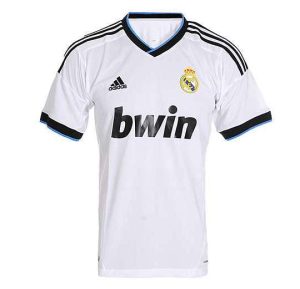 Real Madrid was the first team to allow a sportsbook to take up the entire jersey when they teamed up with Bwin, but gambling companies like Betway, Hollywood Bets, Bet365, William Hill, etc. take over jerseys in all European leagues. And in the NHL, the Washington Capitals have a small space for Caesars Sportsbook, but there is no rule saying the size of the advertising can’t be increased in the future. This is particularly concerning to parents and legislators who want to avoid any gambling to children and youth, but there doesn’t currently appear to be any rules on what the size of the jersey has to be for advertising. So technically, the Caesars patch can be placed on an Ovechkin youth jersey. Many parents are already claiming that the amount of advertising during games is affecting their kids, not to mention that discussions of updated odds and best bets are a part of every sports broadcast from NFL games to PGA broadcasts.
Real Madrid was the first team to allow a sportsbook to take up the entire jersey when they teamed up with Bwin, but gambling companies like Betway, Hollywood Bets, Bet365, William Hill, etc. take over jerseys in all European leagues. And in the NHL, the Washington Capitals have a small space for Caesars Sportsbook, but there is no rule saying the size of the advertising can’t be increased in the future. This is particularly concerning to parents and legislators who want to avoid any gambling to children and youth, but there doesn’t currently appear to be any rules on what the size of the jersey has to be for advertising. So technically, the Caesars patch can be placed on an Ovechkin youth jersey. Many parents are already claiming that the amount of advertising during games is affecting their kids, not to mention that discussions of updated odds and best bets are a part of every sports broadcast from NFL games to PGA broadcasts.
Gambling Advertising
The amount of gambling advertising in Europe has become so bad that at the start of the pandemic the UK government talked about passing a law that would ban sports betting sponsorships. The UK Gaming Commission also strengthened its rules to limit advertising by gambling companies that could impact minors. Consequently, the Premier League announced that it would voluntarily implement a ban on gambling advertising, phasing it out over three years. They estimate this will cost the 10 teams that currently have gambling advertising on their jerseys upwards of $12 million, which is what MLB and NHL teams suggest teams will make from advertising on their jerseys and helmets.
Right now, gambling advertising on clothing isn’t really an issue with North American sports, but most analysts agree it is just a matter of time before it gets out of hand like Europe. In North America, sports betting is still in its infancy and advertisers are desperate to get their brands out there. If a company like Fan Duel or BetMGM could get their logos on a New York Yankees or a Chicago Bulls jersey, the value to both the teams and the sponsors would be monstrous. And if California ever legalizes sports betting, one can only imagine the value of an advertisement on a Los Angeles Lakers or San Francisco 49ers jersey. Owners seem gung-ho for the opportunity and players would also almost certainly agree to it as long as some of that revenue was passed on in terms of increased salaries. Some teams indicated they would resist putting the logos on the publicly sold jerseys, but on the NHL shop website fans can purchase Maple Leafs Jerseys with the Milk patch or the Minnesota Wild jerseys with advertisements from their sponsor, so clearly this isn’t the case.
There is also concern among fans about the current partnerships between media and gambling companies. Aside from the board advertising in hockey mentioned earlier, where stations can change the boards to say FanDuel every 30 seconds or so, there is reason to believe that gambling advertising will creep into all sports broadcasts. FanDuel and Fox have a partnership and many viewers say advertising for FanDuel in local Fox broadcasts has been relentless. 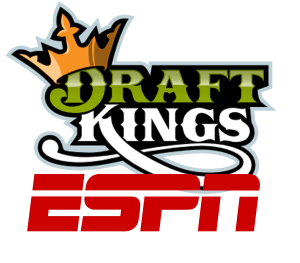 And with the recent announcement of DraftKings partnering with ESPN there is good reason to believe that every live game on all of the ESPN stations will have a DraftKings ad every few minutes, along with the gambling companies it has advertising deals with that aren’t DraftKings. The same holds true in Ontario with deals between Rogers Media and The ScoreBet as well as TSN and FanDuel. This is in addition to deals they made with sportsbooks that they haven’t partnered with such as Bet365, BetMGM and Pointsbet. If it gets too out of hand, there will almost certainly be calls from politicians and anti-gambling groups to do something about it. That happened in Europe and Australia when advertising during games became so pervasive that each government passed a rule banning gambling ads from whistle to whistle in live soccer games that take place at times when youth can be watching.
And with the recent announcement of DraftKings partnering with ESPN there is good reason to believe that every live game on all of the ESPN stations will have a DraftKings ad every few minutes, along with the gambling companies it has advertising deals with that aren’t DraftKings. The same holds true in Ontario with deals between Rogers Media and The ScoreBet as well as TSN and FanDuel. This is in addition to deals they made with sportsbooks that they haven’t partnered with such as Bet365, BetMGM and Pointsbet. If it gets too out of hand, there will almost certainly be calls from politicians and anti-gambling groups to do something about it. That happened in Europe and Australia when advertising during games became so pervasive that each government passed a rule banning gambling ads from whistle to whistle in live soccer games that take place at times when youth can be watching.
So, Gary Bettman said six years ago that the NHL would be dragged kicking and screaming to accept advertising on jerseys, and other leagues iterated something similar. But things change. A pandemic, a huge drop in stadium and ancillary revenue, and the repeal of PASPA has created a situation where the opportunity for advertising revenue is just too great. The train can’t be stopped now that it has left the station, but hopefully measures can be put in place to ensure it doesn’t get out of control. If there comes a day where the Yankee pinstripes are replaced by a monstrous ad for FanDuel or if NFL games see the field peppered with virtual advertisements rather than simply a superimposed first down marker, it would be unfortunate for both viewers and the game. Advertising and sponsorship deals indeed can be a good thing in moderation, but the last thing anyone needs is to see Aaron Judge accepting a World Series MVP trophy while thanking Fan Duel, Hertz Rent a Car, etc. as NASCAR drivers do now. I’m not a purist, but the games need to keep some tradition.
Read insights from Hartley Henderson every month here at GamblersWORLD!

